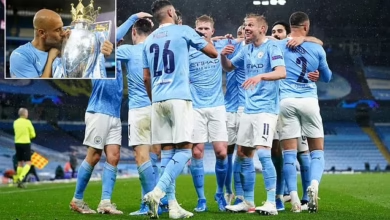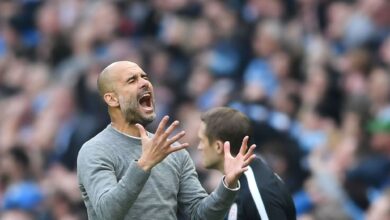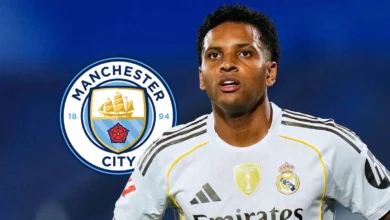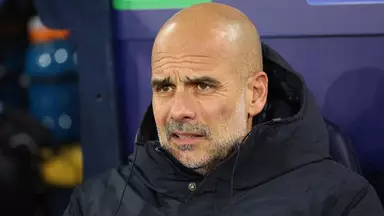David Ornstein transfer update as Man City set their sights on Morgan Rogers’ £50m Aston Villa teammate

Manchester City stands at a crossroads as the 2024/25 season draws to a close, with the club preparing for what promises to be one of the most significant summer transfer windows in recent memory. The impending arrival of Hugo Viana as director of football signals the beginning of a new chapter at the Etihad Stadium, marking the end of Txiki Begiristain’s influential tenure in the role. This transition comes at a crucial time, as City looks to rebuild and reinvent themselves following what has been characterized as a rather disastrous campaign by their typically lofty standards.
The appointment of Viana, formerly of Sporting CP, represents a strategic shift in City’s approach to recruitment and squad development. His track record of identifying and developing talent, particularly in the Portuguese market, has earned him widespread acclaim throughout European football. The decision to retain Begiristain in a consultative capacity during the initial transition period demonstrates City’s commitment to ensuring continuity and stability during this period of change. This collaborative approach aims to blend Viana’s fresh perspective with Begiristain’s intimate knowledge of City’s operational framework and long-term strategic vision.
Pep Guardiola’s influence on the transfer strategy cannot be understated. The Catalan manager, despite facing one of his most challenging seasons at City, continues to command respect and authority in shaping the club’s recruitment priorities. His ability to identify players who can adapt to City’s unique tactical system remains unparalleled, and his input will be crucial in determining which targets align with the club’s philosophical approach to football.
The Premier League Focus: A Strategic Shift
Traditionally, Manchester City has looked to European markets for their marquee signings, bringing in established stars and emerging talents from Spain, Germany, and South America. However, the current transfer strategy appears to represent a significant departure from this approach, with an increased focus on Premier League-proven players. This shift reflects several key considerations that have influenced City’s thinking.
The Premier League’s unique physicality, pace, and tactical demands often require an adjustment period for players arriving from other leagues. By targeting players already accustomed to English football’s specific challenges, City can minimize the adaptation period and expect more immediate contributions. This approach has proven successful in recent years, with players like Riyad Mahrez, Aymeric Laporte, and Jack Grealish all making significant impacts after domestic moves.
Furthermore, the homegrown player regulations continue to influence transfer decisions across English football. While City has developed a strong academy system, the requirement to maintain a certain number of homegrown players in their squad makes Premier League targets particularly attractive. Players like Jacob Ramsey and Morgan Rogers, having developed through English youth systems, would contribute to meeting these regulatory requirements while potentially offering significant playing ability.
The financial implications of domestic transfers also play a role in this strategic shift. While Premier League clubs command premium prices for their best players, the absence of complex international transfer regulations and the established relationships between English clubs can sometimes facilitate smoother negotiations. Additionally, the reduced risk associated with players who have already proven themselves at the highest level of English football may justify the premium prices often demanded.
Aston Villa: The Unexpected Target
Aston Villa’s emergence as a potential source of transfer targets for Manchester City represents one of the most intriguing developments in the current transfer landscape. Under Unai Emery’s stewardship, Villa has transformed from a club fighting relegation battles to one competing for European qualification and challenging established Premier League hierarchies. This remarkable turnaround has not only elevated the club’s profile but has also developed and attracted players who now find themselves on the radar of Europe’s elite clubs.
The relationship between City and Villa adds another layer of complexity to any potential transfers. While not traditional rivals, the clubs have engaged in significant transfer business in recent years, with City’s acquisition of Jack Grealish for £100 million serving as a precedent for high-profile moves between the two institutions. This previous transaction demonstrated Villa’s willingness to sell their best players for appropriate compensation, while also establishing a working relationship that could facilitate future negotiations.
Emery’s tactical approach at Villa has created an environment where attacking players can flourish, developing skills and gaining experience that align with the demands of top-level football. The Spanish manager’s emphasis on technical ability, tactical flexibility, and high-intensity pressing mirrors many of the principles that Guardiola values in his players. This tactical compatibility suggests that Villa players might adapt more readily to City’s system than those from clubs with markedly different playing philosophies.
The timing of City’s interest in Villa players also coincides with a period of potential transition at Villa Park. Despite their recent success, the club continues to face financial pressures related to UEFA’s Financial Fair Play regulations, which may necessitate player sales to maintain compliance. This situation could create opportunities for clubs like City to acquire talented players at prices that might otherwise be prohibitive.
Jacob Ramsey: The £50 Million Question
Jacob Ramsey’s emergence as a primary target represents perhaps the most significant element of City’s summer transfer strategy. The 23-year-old midfielder has become synonymous with Aston Villa’s recent resurgence, developing from a promising academy graduate into a key first-team player under successive managers. His journey from the Villa youth system to potential Manchester City target exemplifies the type of player development that clubs throughout the Premier League are striving to achieve.
Ramsey’s playing style and tactical versatility make him an attractive proposition for Guardiola’s system. Primarily deployed as a left-sided attacking midfielder or winger, Ramsey possesses the technical ability, work rate, and tactical intelligence that City values in their players. His ability to contribute both defensively and offensively aligns with Guardiola’s preference for players who can fulfill multiple roles within his tactical framework.
The £50 million valuation placed on Ramsey by Aston Villa reflects both his potential and the current market dynamics surrounding young English talent. This figure positions him among the most expensive midfielders in Premier League history, highlighting the premium that clubs must pay for proven domestic talent. For City, this investment would represent a significant commitment to a player who, while talented, has yet to prove himself at the highest levels of European competition.
Ramsey’s statistical profile presents a mixed picture when compared to established City players. His goal contribution, while respectable, falls short of the numbers typically associated with City’s attacking players. However, his creative metrics, including assists and key passes, suggest a player capable of contributing to City’s possession-based approach. The challenge for City’s recruitment team lies in projecting how Ramsey’s current abilities would translate to the higher level of competition and increased tactical demands at the Etihad.
The psychological and developmental aspects of Ramsey’s potential transfer cannot be overlooked. At 23, he represents the ideal age profile for a player who could develop further under Guardiola’s tutelage while offering immediate contributions to the first team. His familiarity with Premier League football would minimize the adaptation period, while his relative youth suggests significant room for improvement and development.
Morgan Rogers: The Prodigal Son Returns?
The potential return of Morgan Rogers to Manchester City presents a fascinating subplot in the club’s transfer strategy. Rogers’ journey from City’s academy to Middlesbrough, then to Aston Villa, and potentially back to City, illustrates the complex pathways that modern football careers can take. His development since leaving City has been remarkable, transforming from a promising youth player into a consistent Premier League performer.
Rogers’ time at Villa has allowed him to develop aspects of his game that might have remained dormant in City’s youth system. The different tactical approaches, playing styles, and developmental philosophies he has encountered have contributed to creating a more well-rounded player. His experience of regular first-team football, particularly in high-pressure situations, has provided him with the mental resilience and tactical awareness that City values in their players.
The financial implications of Rogers’ potential return are particularly intriguing. City sold him to Middlesbrough for a relatively modest fee, and Villa subsequently acquired him for £16 million. If City were to re-sign Rogers, they would likely pay significantly more than they received for his initial departure, highlighting the value that external development can add to a player’s worth.
From a tactical perspective, Rogers offers Guardiola versatility across multiple positions. His ability to play as a central attacking midfielder, winger, or even in more advanced roles provides the tactical flexibility that City requires. His understanding of City’s playing philosophy, despite his time away, could facilitate a smoother integration into the current squad than might be possible with external targets.
The psychological impact of Rogers’ potential return extends beyond the individual player. It would signal to City’s current academy players that there are pathways back to the first team, even for those who initially leave the club. This message could influence the development and retention of young talent, encouraging players to continue their development elsewhere with the possibility of eventual return.
The Broader Market Context
Manchester City’s interest in Aston Villa players must be understood within the broader context of the current transfer market. The post-pandemic financial landscape has created a more conservative approach to spending across European football, with clubs more cautious about making significant investments in unproven players. This environment has increased the value of players who have already demonstrated their ability in competitive leagues.
The Premier League’s financial strength relative to other European leagues has created a unique dynamic where domestic transfers often command higher fees than international moves. This situation has led to increased competition among Premier League clubs for the best domestic talent, driving up prices and creating a more complex negotiation environment.
UEFA’s Financial Fair Play regulations continue to influence transfer strategies across European football. For clubs like City, these regulations require careful balancing of expenditure and revenue, making the identification of players who can provide both immediate impact and long-term value crucial. The focus on Premier League players may reflect a strategy to acquire assets that are less likely to depreciate in value due to adaptation issues or cultural adjustments.
The timing of City’s transfer strategy also coincides with a period of significant change in English football. The emergence of Newcastle United as a financial force, the continued strength of traditional rivals, and the increasing competitiveness of the Premier League have created an environment where squad depth and quality are more important than ever. This context makes the acquisition of versatile, Premier League-proven players particularly attractive.
Tactical Considerations and System Integration
Guardiola’s tactical system demands specific characteristics from players, regardless of their position. Technical ability, tactical intelligence, work rate, and adaptability are non-negotiable requirements for any player hoping to succeed at City. Both Ramsey and Rogers possess these fundamental attributes, but their integration into City’s system would require careful consideration of their specific roles and responsibilities.
Ramsey’s potential role at City would likely involve competition with established players like Phil Foden, Jack Grealish, and Bernardo Silva. His ability to play across multiple positions in the attacking third would provide Guardiola with tactical flexibility, particularly in managing the physical demands of a season that includes domestic competitions and European football. The challenge would be ensuring that Ramsey’s development continues while managing the expectations associated with his significant transfer fee.
Rogers’ versatility presents different tactical opportunities. His ability to play as a traditional number 10, a false 9, or in wider positions would allow Guardiola to modify City’s tactical approach based on opposition strengths and weaknesses. This flexibility has become increasingly important as opponents have developed more sophisticated methods of neutralizing City’s traditional tactical patterns.
The integration of new players into City’s possession-based system typically requires a significant adjustment period. Both Ramsey and Rogers would need to adapt to the increased pace of City’s passing game, the higher positional demands, and the greater tactical complexity. However, their Premier League experience would provide them with a foundation that might accelerate this adaptation process.
Financial Implications and Market Dynamics
The financial aspects of pursuing both Ramsey and Rogers represent a significant consideration in City’s transfer strategy. The combined cost of acquiring both players could exceed £70 million, representing a substantial investment in two players who, while talented, have yet to prove themselves at the highest levels of European competition.
This investment must be weighed against alternative targets from other leagues who might offer similar or superior ability at lower costs. The premium associated with Premier League players reflects not only their proven ability but also the reluctance of English clubs to sell their best players to domestic rivals. This dynamic has created a market where domestic transfers often exceed the fees paid for similar players from other leagues.
The financial sustainability of such investments depends on multiple factors, including the players’ development trajectory, their contribution to team success, and their potential resale value. City’s track record in player development suggests that they could maximize the potential of both players, but the risk associated with such significant investments cannot be ignored.
The broader financial implications extend beyond the initial transfer fees. Both players would command substantial wages, and their acquisition would necessitate careful squad management to maintain financial compliance with various regulations. The decision to pursue these targets reflects confidence in their ability to contribute to City’s success and justify their substantial cost.
Conclusion: A Strategic Gamble with Significant Potential
Manchester City’s focus on Aston Villa players represents a strategic gamble that could define their approach to squad building in the coming years. The combination of Premier League experience, tactical suitability, and developmental potential makes both Ramsey and Rogers attractive targets, but the financial investment required raises questions about the efficiency of this approach.
The success of this strategy will ultimately depend on the players’ ability to adapt to City’s higher demands and contribute to the club’s continued success. Their Premier League experience provides a foundation for optimism, but the step up to City’s level of competition and expectation represents a significant challenge.
For Aston Villa, the potential departure of key players would represent both a financial opportunity and a sporting challenge. The fees generated from these sales could fund further squad development, but replacing players of Ramsey and Rogers’ caliber would require careful recruitment and integration.
The broader implications of this transfer strategy extend beyond the immediate impact on both clubs. It reflects the evolving dynamics of the Premier League transfer market, where domestic moves increasingly command premium prices and clubs must balance financial sustainability with sporting ambition.
As the summer transfer window approaches, the resolution of City’s interest in these Villa players will provide insight into the club’s strategic direction under new leadership. Whether this approach proves successful or represents a costly miscalculation will be determined by the players’ performances and contributions to City’s pursuit of continued success at the highest levels of football.
The stakes are high, the investment significant, and the potential rewards substantial. In the complex world of modern football transfers, Manchester City’s focus on Aston Villa players represents both the opportunities and challenges that define contemporary squad building at the elite level.














